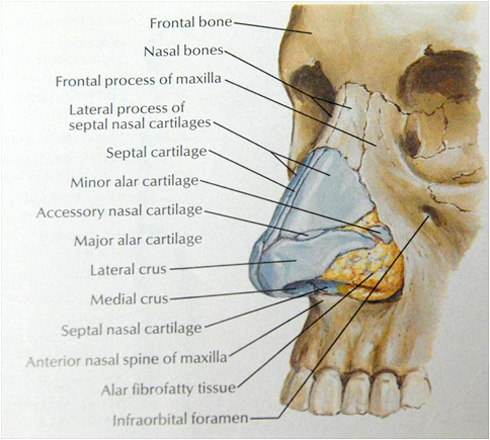Rhinoplasty (Dr Young Specializes in Facial Plastic Surgery and Rhinoplasties) is one of the hardest procedures that a facial plastic surgeon can do. There are many steps in doing a Rhinoplasty and the steps you go through and the order is essential. Many noses have a deviated component to it. I usually try to make all noses straight first before doing additional work in the middle and lower part of the nose. If you don’t make the nose straight all of the other moves that you do will further accentuate the deviation. It starts with your septum. You have to make sure that the septum is straight first before anything. Sometimes this requires treating the nasal bones and shifting them to make them more in the middle as well. Septum with all of these maneuvers the septum still doesn’t become straight. At this point, weakening the septum with 50% inferior cuts until it is allowed to come to the middle is needed. In addition, sometimes it requires fracturing the septum higher up under the nasal bones to really weaken the septum and allow it to come into the middle. Sometimes there are forces at the bottom of the septum near the tip that needs to be addressed including removing parts of the septum that are deviated or even shaping the spine that is at the bottom of the nose. All of these things can be seen in the photo that is at the bottom of this blog. Once the septum is straight then you can work on other things like the nasal tip, upper lateral cartilages to make the tip look the way you want. I tend to do all of my rhinoplasties in the open approach and we have a picture of how that heals on our website. This allows me to more accurately control things in the nose cutting down drastically my revision rate. I also employ non destructive techniques for the best controlled long term solid results. I never morselize, or weaken the cartilages to get results. There is too much variables in healing that can lead to a bad result. I hardly cut the cartilages and leave them to heal. They are always reconstituted and always done away from the tip area. Sometimes in thin skin, I will crush cartilage to cover sharp edges on the tip areas or other areas to soften the results. But the foundation is never crushed or morselized. My order of rhinoplasty proceeds like this: markings, injections, open approach, address the nasal bridge first, if there is a deviation, treat the nasal bones through osteotomies to make the septum straight, septal harvesting for grafts preserving 1.5cm of struts for ultimate support, septal restructuring to make sure that it is straight, further work on the nasal bridge, then proceeding to reconstituting the upper lateral cartilages to the septum, then I start on the tip work including trimming the lateral crural cartilages, tip suturing (columnellar strut, medial crural sutures, transdomal sutures to narrow the tip domes, interdomal sutures to make the whole tip smaller, setting the tip’s projection, controlling the rotation through a tip rotation suture), then closure which includes closing the dead space. Below is a picture of the anatomy of the nose. The middle crura is in between the lateral and medial crura. The middle crura cartilage and the junction with the lateral crura creates the tip highlight and the tip is mainly made up of the middle crura with the lateral and medial contributing to how the middle crura is presented on the nose. The lateral process of the septal nasal cartilages are otherwise known as the upper lateral cartilages. The lateral, middle and medial crura make up the lower lateral cartilages.
I hope that was interesting for you!
Thanks for reading, Dr Young
Dr Young specializes in Facial Cosmetic and Reconstructive Surgery and is located in Bellevue near Seattle, Washington